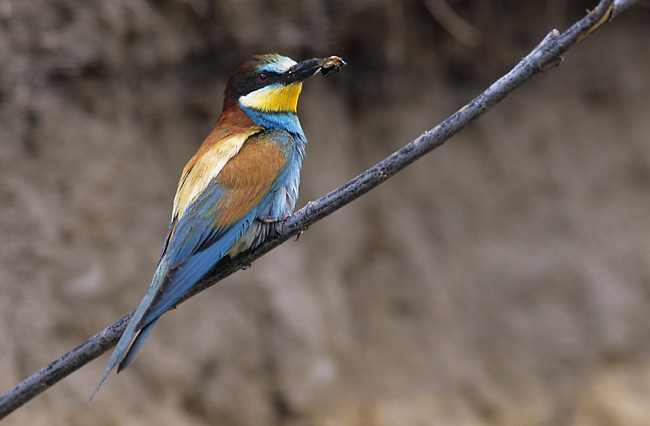|
| Query: european beak | Result: 1st of 38 | |
European Bee-eater (Merops apiaster) - Wiki
| Subject: | European Bee-eater (Merops apiaster) - Wiki
| |

| Resolution: 650x426
File Size: 80428 Bytes
Date: 2004:08:31 23:25:38
Upload Date: 2007:09:10 12:51:00
|
ERROR : Server Busy(-1105)
ERROR : Server Busy(-1105)
European Bee-eater (Merops apiaster) - Wiki
European Bee-eater
From Wikipedia, the free encyclopedia
[Photo] European Bee-eater (Merops apiaster). Phto by Marek Szczepanek http://commons.wikimedia.org/wiki/User:Pkuczynski/Marek_Szczepanek
The European Bee-eater, Merops apiaster is a near passerine bird in the bee-eater family Meropidae. It breeds in southern Europe and in parts of north Africa and western Asia. It is strongly migratory, wintering in tropical Africa (or to North-Western India, southern India and Sri Lanka in the case of Asian birds). This species occurs as a spring overshoot north of its range, with occasional breeding in northwest Europe.
This species, like other bee-eaters, is a richly-coloured, slender bird. It has brown and yellow upper parts, whilst the wings are green and the beak is black. It can reach a length of 27-29 cm, including the two elongated central tail feathers. Sexes are alike.
This is a bird which breeds in open country in warmer climates. Just as the name suggests, bee-eaters predominantly eat insects, especially bees, wasps and hornets, which are caught in the air by sorties from an open perch. Before eating its meal, a European Bee-eater removes the sting by repeatedly hitting the insect on a hard surface. It eats some 250 bees daily.
These bee-eaters are gregarious, nesting colonially in sandy banks, preferably near river shores, usually at the beginning of May. They make a relatively long tunnel in which the 5 to 8, spherical white eggs are laid around the beginning of June. Both the male and the female take care of the eggs, which are brooded for about 3 weeks. These birds also feed and roost communally.
The call is a pleasant distinctive trill.
It has been classically described as afraid of man, thus tending to avoid him, but recent observations record that it is often seen apparently playing with cars, sometimes following them. After rain, indeed, it may be found closer to human settlements, looking for beehives. The bee-eater is obviously resented by bee keepers, but is reputed an important component in balancing local bio-systems.
http://en.wikipedia.org/wiki/European_Bee-eater
| The text in this page is based on the copyrighted Wikipedia article shown in above URL. It is used under the GNU Free Documentation License. You may redistribute it, verbatim or modified, providing that you comply with the terms of the GFDL. |
|
Comments |
|---|
| | Guest |
|
Scientific Name: Merops apiaster Linnaeus, 1758
Common Names: European Bee-eater, Bee-eater
French: Guêpier d’Europe German: Bienenfresser Spanish: Abejaruco europeo
Taxonomy: Merops Apiaster Linnaeus, 1758, southern Europe. |
^o^
Animal Pictures Archive for smart phones
^o^
|
|
|

